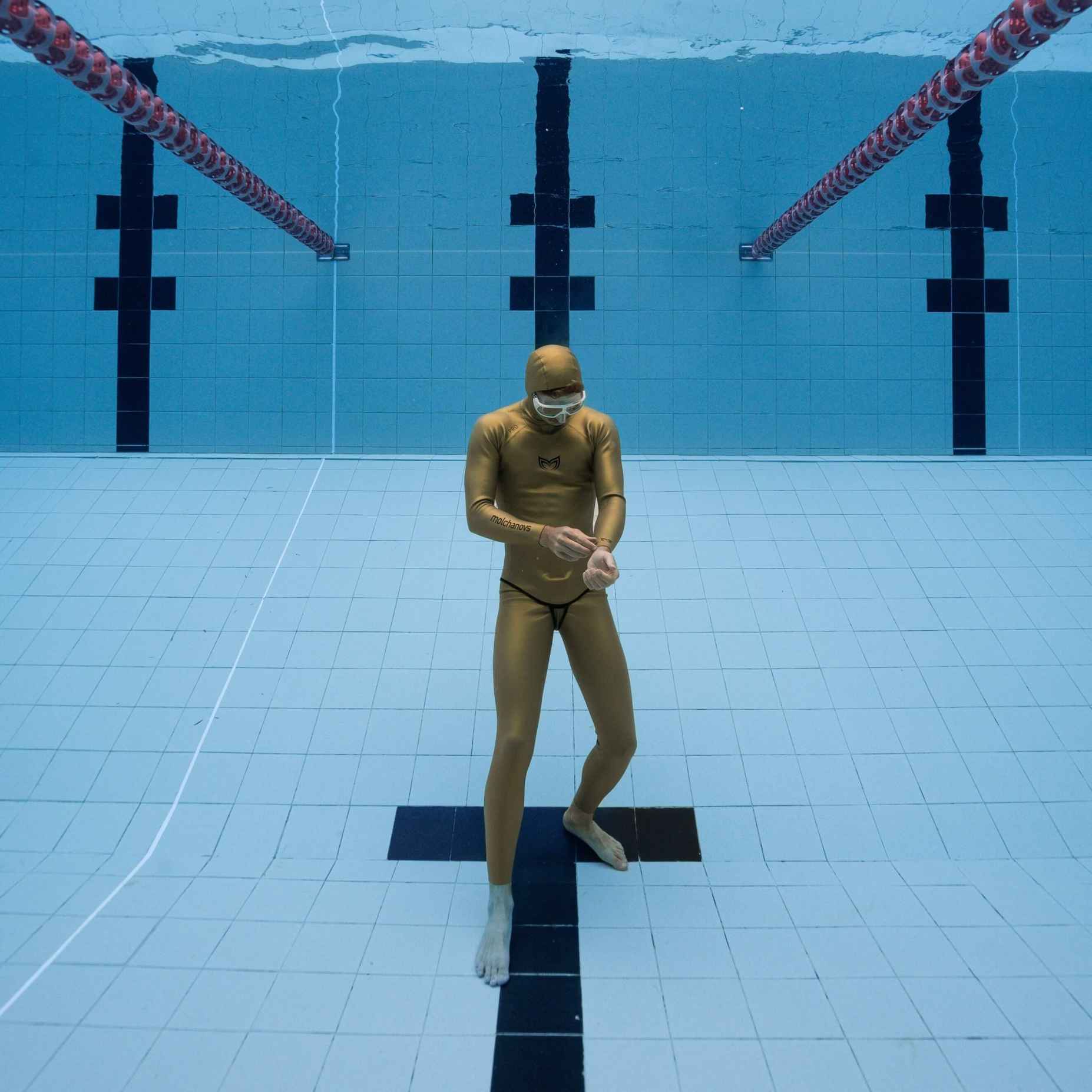The History Behind the Legendary Molchanovs Monofin

By Kristina Zvaritch
Contributors: Alexey Molchanov
Molchanovs is perhaps best well-known for our line of monofins, which have assisted a countless number of freediving athletes in setting many national and world records. Since monofins are the most powerful propulsive tool freedivers can use in competitions, an infinite number of hours are consistently being spent attempting to perfect this favorite piece of freediving equipment. This is why we would like to share with you the general history of monofins and our own personal journey with them.

Early monofin development
The use of monofins in competition, especially in freediving, started only relatively recently when you compare to it to the history of freediving as a sport. In the 1950s and 1960s, the countries who were using monofins for their finswimming competitions used rubber monofins, which were often very soft, yet heavy. Over the coming years, many European countries created different variants of the monofin and began sampling different swimming techniques in order to get the most efficiency out of this new style of fin.
It was not until 1969 that Boris Porotov of the Kazakh Soviet Socialist Republic built a monofin where the entire blade was made from fiberglass-reinforced plastic. One year later, Nadejda Turukalo of the USSR competed and conquered the European Finswimming Championship in Barcelona in the 25m (82ft) apnea event, which began the trend of using monofins in finswimming competitions. Most of the members of the Soviet Team started using monofins made of fiberglass for their competitions since monofins dramatically increased the diver’s speeds, and the use of bifins gradually became less popular. Monofins were made from fiberglass, carbon fiber, aluminum, or rubber, and the design of the blade itself has seen many changes throughout the years, such as the shape and angle of the blade.
The Monofin in Freediving
Today, most monofins are made from fiberglass or carbon fiber. While monofins may look similar at first glance, finswimming monofins are made for speed, which is not always very useful for freediving. Freedivers who use monofins need to be able to remain in a perpetual state of relaxation while also maintaining speed and maximizing efficiency. While there are many companies developing and selling monofins that are designed for finswimming, these monofins are generally not very useful for freediving.

Monofins specifically for freediving
From 2004 until 2010, Alexey Molchanov, co-founder of Molchanovs and multiple world record holder and champion, began gathering ideas and drawing from his own personal experiences to start developing a new type of monofin. He first tried to adjust finswimming monofins for freediving by making them softer. This did not work for him when he put them to the test, since he felt he needed to focus more on relaxation rather than speed. So instead, he decided to create his own monofin specifically designed for freediving.
Molchanovs became the first company in the world to design freediving-specific monofins, focusing on efficiency for depth and distance competitions, with less of a focus on speed. He assembled a team of engineers and craftspersons that were familiar with freediving, or were freedivers themselves, to design and develop the new monofin. He made sure that he and other top athletes performed rigorous tests on the monofin to confirm that it was indeed ideal for freediving performances. Since 2010, Molchanovs produced three generations of monofins, making changes to each model to improve performance.
Transversal stability development
Developed in 2012 and released in 2014, the S1 (Sport 1) monofin became the first monofin for freediving that incorporated transversal stability, which helps the blade stay stable while finning due to the diagonal positioning of the fiberglass layers. Finswimming monofins did not need this diagonal positioning as they have many layers of material and are thick, strong, and made for speed. This development of transversal stability paved the way for future monofins, since without it, soft blades would bend in a spoon-like shape, making them inefficient for freediving purposes.
After the development of transversal stability in the S1, Molchanovs continued to incorporate it in the subsequent generations of monofins, which included the S2 (Sport 2) and CM3 (Competition Monofin 3). With each generation of monofin, various updates to the blade and foot pockets were implemented. Updates to the blade included an adjusted number of fiberglass layers at the base of the blade, a softer blade tip, and a modified shape of the blade. Foot pockets updates included added arch support, improved soft lining on the inside of the foot pockets, and a design change to the current highly-specialized, ergonomic foot pockets. This new design of foot pockets provides better energy transfer to the blade and enhances the overall performance of the monofin, especially compared to standard, factory-molded foot pockets. Molchanovs is currently working on a carbon monofin for release in 2021.

Why athletes trust Molchanovs monofins
Over the years, Molchanovs monofins became synonymous with achieving CWT and DYN national and world records. Top athletes from numerous countries trust in monofins made by Molchanovs because over 10 years of experience in cultivating freediving-specific monofins created a level of expertise that is difficult to match in such a niche market. The people involved in creating, producing, and testing the monofin all eat, drink, and breathe freediving, and are dedicated to the advancement of the sport.This is why so many freedivers choose Molchanovs for their equipment needs. In the end, what better freediving equipment is there to choose than equipment that is developed by freedivers for freedivers?





Leave a comment